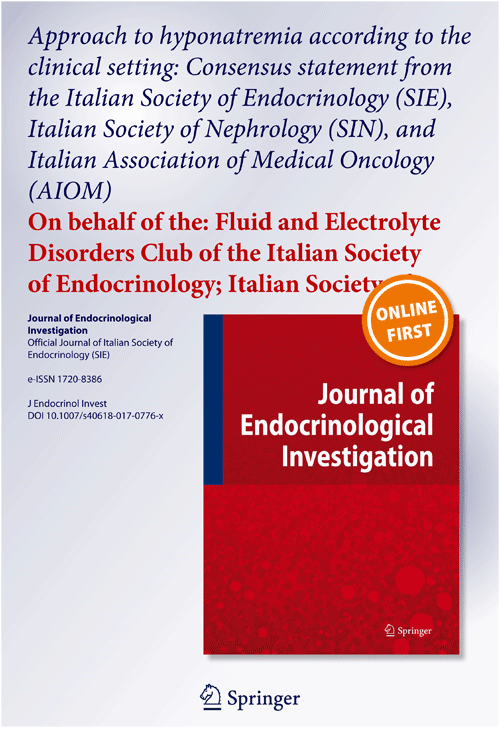

Approach to hyponatremia according to the clinical setting: Consensus statement from the Italian Society of Endocrinology (SIE), Italian Society of Nephrology (SIN), and Italian Association of Medical Oncology (AIOM)

On behalf of the: Fluid and Electrolyte Disorders Club of the Italian Society of Endocrinology; Italian Society
Hyponatremia (hypoNa, serum sodium levels < 135 mEq/L) is the most frequently observed electrolyte disorder in clinical practice, affecting up to 15–30% of hospitalized patients [1]. HypoNa is characterized by an excess of water relative to exchangeable total body sodium that can be normal, increased, or decreased. As a consequence, hypoNa can be classified by the fluid volume status of the patient (euvolemic, hypovolemic, and hypervolemic hypoNa) or by plasma tonicity, i.e., the effective osmolality (isotonic, hypertonic, and hypotonic hypoNa). Hypotonic hypoNa is the most commonly observed form in daily clinical practice [2]. Severe hypoNa, especially if acutely developed (i.e., in less than 48 h), may determine major neurological symptoms due to brain edema, a potentially life-threatening complication if not promptly recognized and treated [3]. However, even mild hypoNa (130–134 mEq/L) may also be associated with other strictly related clinical problems, often insidious and scarcely symptomatic, such as bone demineralization or gait instability and attention deficits, which may increase the risk of falls and bone fractures, especially in the elderly [4–8]. Accordingly, recent meta-analyses have shown that even mild forms of hypoNa are associated with an increased risk of mortality in different clinical settings [9], along with prolonged hospital stay, increased readmission rates, and higher hospital costs....